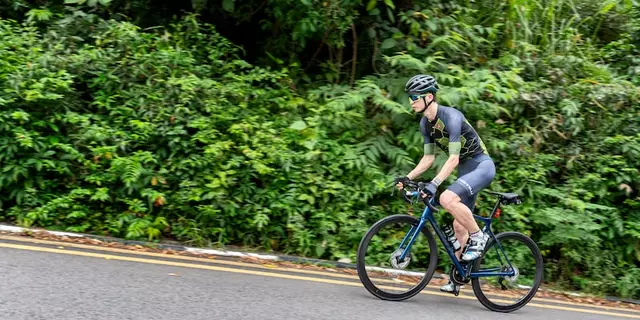- Home
- Cycling Tour Travel
- Why do the big cycling tours start in different countries?

Why do the big cycling tours start in different countries?
The world’s biggest cycling tours, such as the Tour de France, the Vuelta a España, and the Giro d’Italia, are well-known for their rotation among different countries. But why is that?
The answer lies in the history of cycling. The first major tour was the Tour de France, which was organized in 1903 by a French newspaper, L’Auto. The race was designed to increase circulation and the newspaper’s popularity. After its success, other newspapers wanted to replicate the format—and the idea of cycling tours spread around Europe. As the different nations began to adopt the format, they started to host their own races.
The idea of rotating the host countries was adopted out of necessity. After World War I, cycling tours became more international and the organizers needed to find ways to make them more accessible to different audiences. As a result, the races began to alternate between countries and regions. This gave people from different countries the chance to experience the thrill of the race, and it also enabled the organizers to reach a wider audience.
Today, the rotation of host countries for the big cycling tours is still an important part of the sport. It allows the organizers to bring the races to new audiences and to keep the races fresh and exciting. Plus, it allows fans from different countries to experience the thrill of the race. In the end, the rotation of host countries helps to keep the sport alive and vibrant.
The big cycling tours like Tour de France, Giro d'Italia, and La Vuelta a España are some of the most popular events in the cycling world. Each year, thousands of cyclists from around the globe come together to compete in these races. But why do they start in different countries?
One of the main reasons for starting the big cycling tours in different countries is to give cyclists from all over the world the opportunity to experience different cultures and locations. By starting the tours in different countries, cyclists can explore new places and learn about different cultures. This can be a great learning experience for those involved in the race, as well as for the spectators. It also helps to promote the sport of cycling in different countries, and to bring more attention to the race.
Additionally, starting the big cycling tours in different countries can help to create a more competitive environment. By having different courses and terrain in different countries, cyclists must adapt to the changing conditions. This helps to make the race more exciting and challenging, which can lead to better performances by the cyclists. It also allows the event organizers to create an event that is more interesting and varied for the spectators.
Finally, starting the big cycling tours in different countries also allows for different sponsors to be involved. By having different locations, sponsors can be more creative in their marketing strategies and target different audiences. This can help the sponsors to reach a wider audience and potentially increase their profits.
In conclusion, there are numerous benefits to starting the big cycling tours in different countries. It allows cyclists to experience different cultures, promotes cycling, creates a more competitive environment, and gives sponsors more opportunities to reach a larger audience. All of these benefits make starting the big cycling tours in different countries a great decision.
Cycling tours like the Tour de France and Vuelta a España are iconic events that draw a massive audience from around the world. But why do the organizers of these races change the host country from year to year? It’s not a decision that’s taken lightly; there are a number of factors that must be taken into account before deciding to move the tour to a new country.
The first challenge is finding a location that’s suitable for the race. It needs to be able to host a large number of cyclists and spectators, while also being able to provide the necessary infrastructure and support that the race requires. It also needs to be able to provide a variety of terrain and roads that will challenge the riders.
The second challenge is the political climate. The host country needs to be willing to work with the organizers of the race to make sure that the event is a success. This includes providing the necessary resources and infrastructure, as well as any special permissions or arrangements that are needed in order to allow the race to take place.
Finally, the host country needs to be able to provide an economic benefit from hosting the race. This can include increased tourism, increased publicity for the country, and increased revenue from sponsors.
These are just a few of the challenges that must be taken into account when choosing a new host country for a big cycling tour. Each year, the organizers carefully weigh the pros and cons of each potential host country to ensure that the race is a success.

Damien Lockwood
Hi, I'm Damien Lockwood, a sports enthusiast with a deep passion for running and cycling. I've spent years honing my skills and understanding the mechanics behind these disciplines. Apart from participating in various marathons and races, I also love sharing my experiences and valuable insights through my writings. My goal is to inspire and encourage people to embrace a healthy lifestyle by engaging in physical activities they enjoy.
About
Welcome to IdentiSports UK Hub, your ultimate destination for all things running and cycling in the United Kingdom. Discover the latest news, events, and tips to help you improve your performance and stay connected with the vibrant sports community. Join us now and unleash your true potential!



